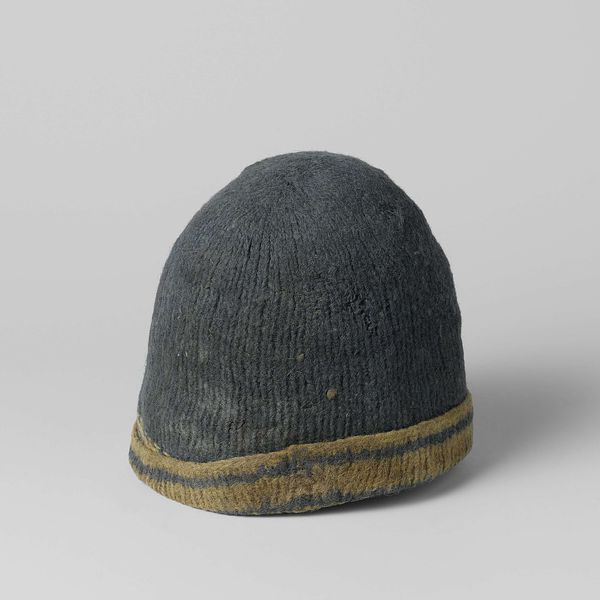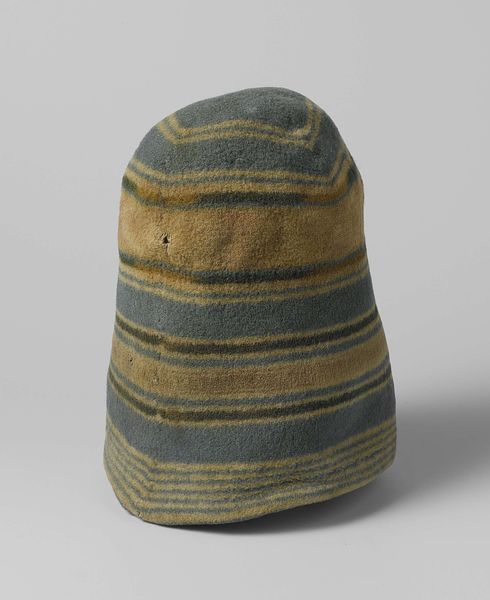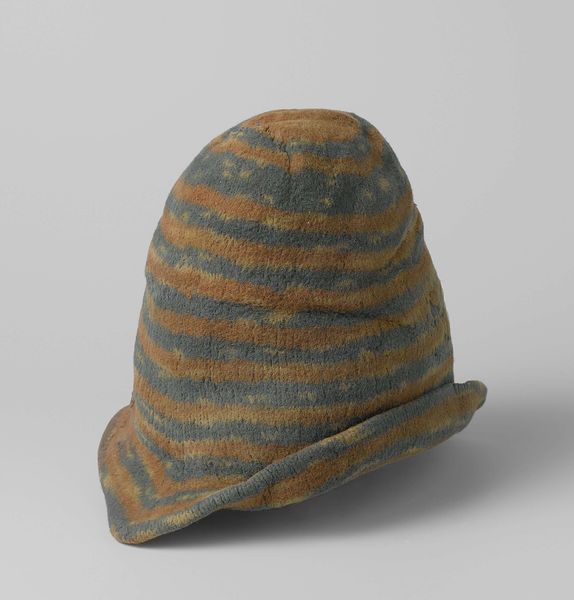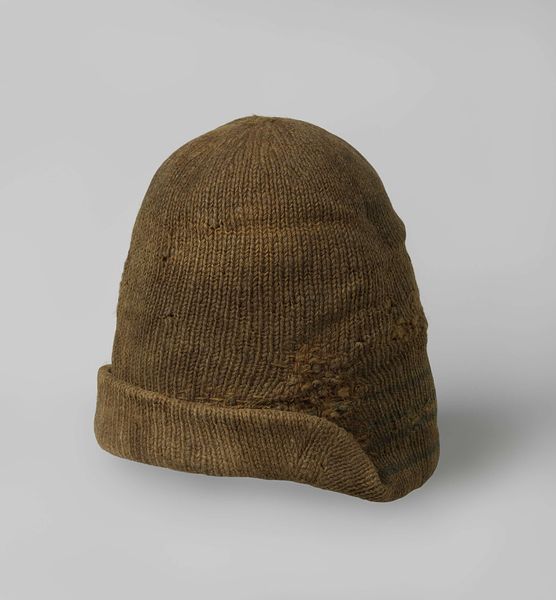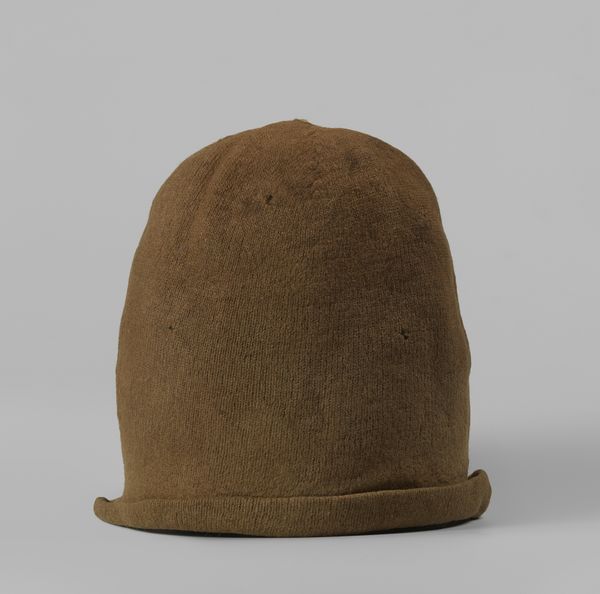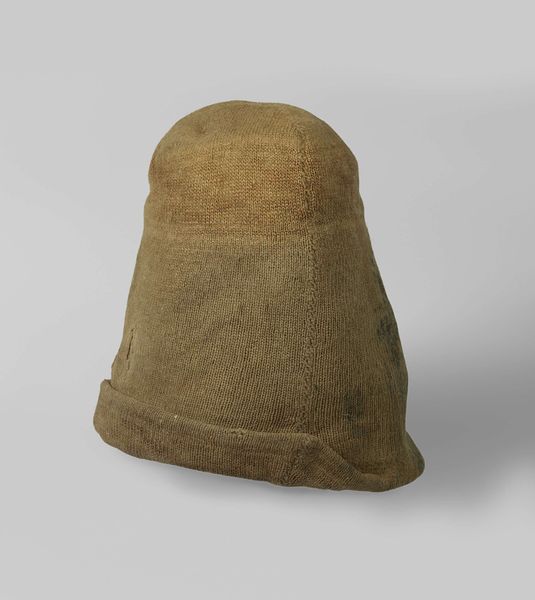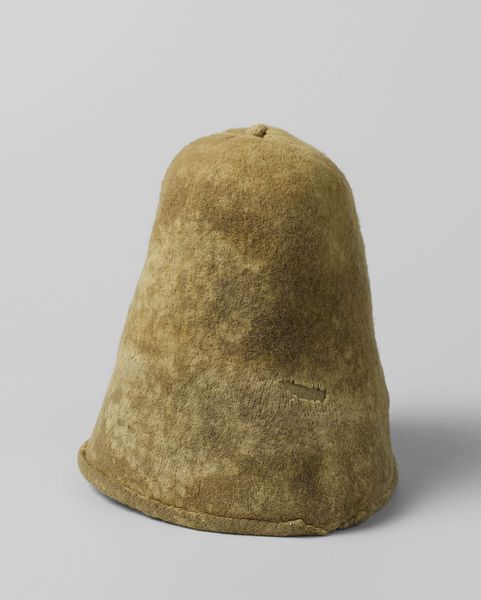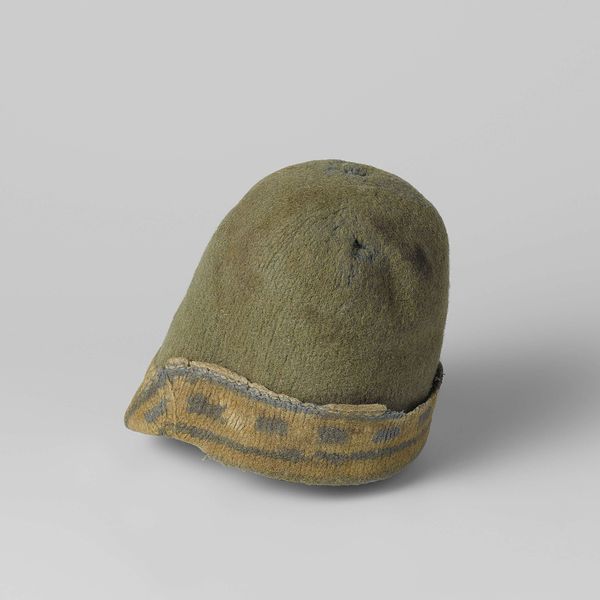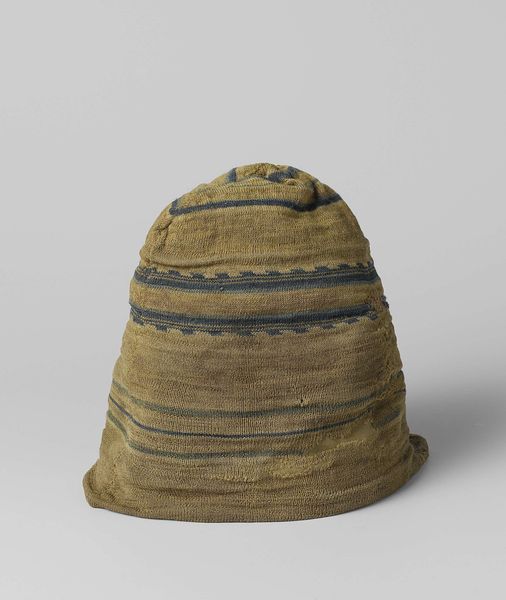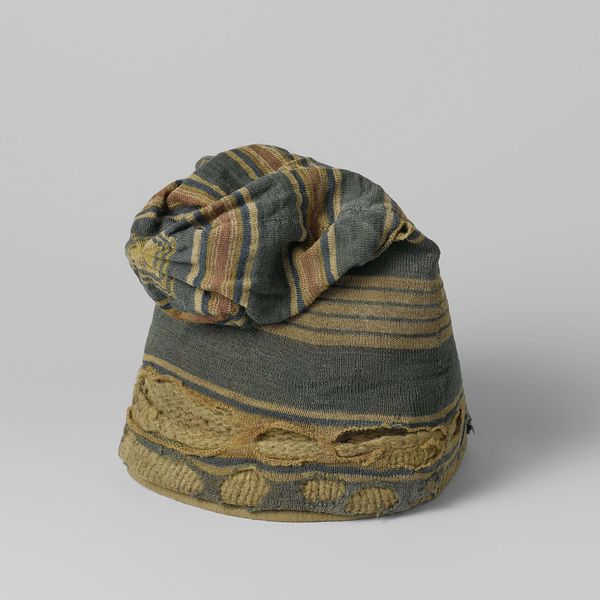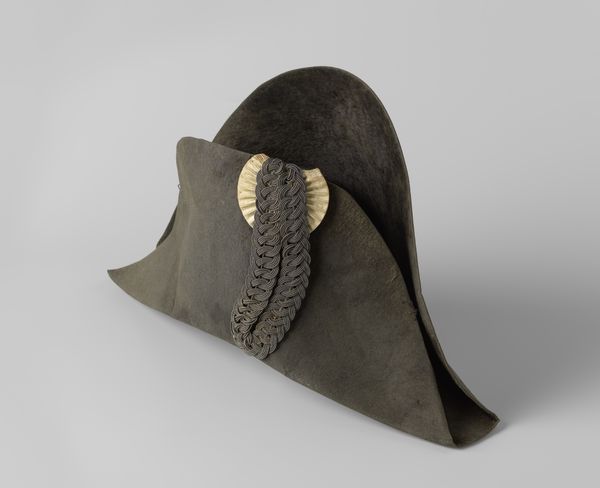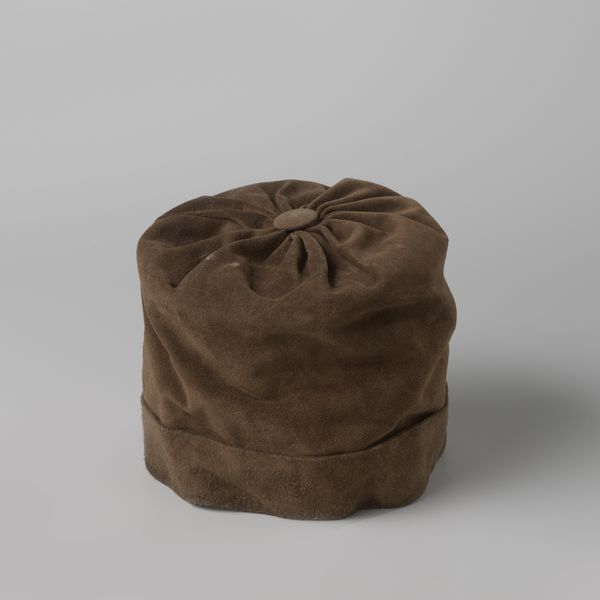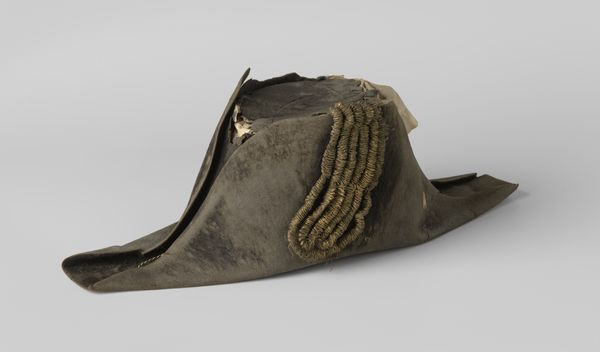
textile
#
dutch-golden-age
#
textile
Dimensions: width 35 cm, height 29.5 cm, depth 29.5 cm, circumference 60 cm, height 24 cm
Copyright: Rijks Museum: Open Domain
Curator: Here we have "Woollen Caps Worn by Dutch Whalers," dating roughly from 1650 to 1800, crafted anonymously from textile. Editor: Immediately, I notice its stout, almost sturdy form. The way the horizontal bands of colour disrupt the curve gives it a striking visual weight. Curator: It's fascinating to consider the context. These weren't just any caps; they were vital pieces of equipment for Dutch whalers facing harsh Arctic conditions. The material itself speaks to that—thick wool, likely dense and water-resistant, all about utility. Editor: Absolutely. The knitting is rudimentary. There is no sophistication. Curator: But look at that simplicity. The form follows function perfectly: close-fitting to retain warmth, no elaborate design that could snag or get in the way during labour. Editor: From a formal standpoint, the limited palette is very striking, very evocative. The interaction of blue and yellow-brown. It speaks to harsh environment and labour. Curator: Exactly! And that materiality directly links to trade routes, access to wool, the labour involved in producing the caps—perhaps even the specific knitting techniques passed down within whaling communities. This tells of material realities shaping daily lives and social structures. Editor: I do wonder about its current condition. Discolourations, wear and tear of the textile only adds to the form. It suggests wear, degradation, the story of the material speaking about the nature of temporality, degradation, Curator: I agree entirely, that sense of preservation highlights not only durability of craftwork, but also that this would have been remade many times by these whaling communities, a sign of endurance to cold, harsh labour. Editor: Indeed. It prompts reflections on design, material integrity, functionality in its purest form. Curator: Indeed. I hope we offered insight to its significance through material value. Editor: Absolutely, and perhaps some reflection of art beyond form.
Comments
rijksmuseum about 2 years ago
⋮
In 1980 archaeologists investigated the graves of 185 Dutchmen – whale hunters and workmen of the train oil refineries – who had died on or near Spitsbergen during the 17th century. The skeletons were still wearing their knitted woollen caps. Each cap was individualized; the men recognized one another only by the pattern of stripes on the caps. The men were bundled up so tightly against the fierce cold that only their eyes were visible.
Join the conversation
Join millions of artists and users on Artera today and experience the ultimate creative platform.
